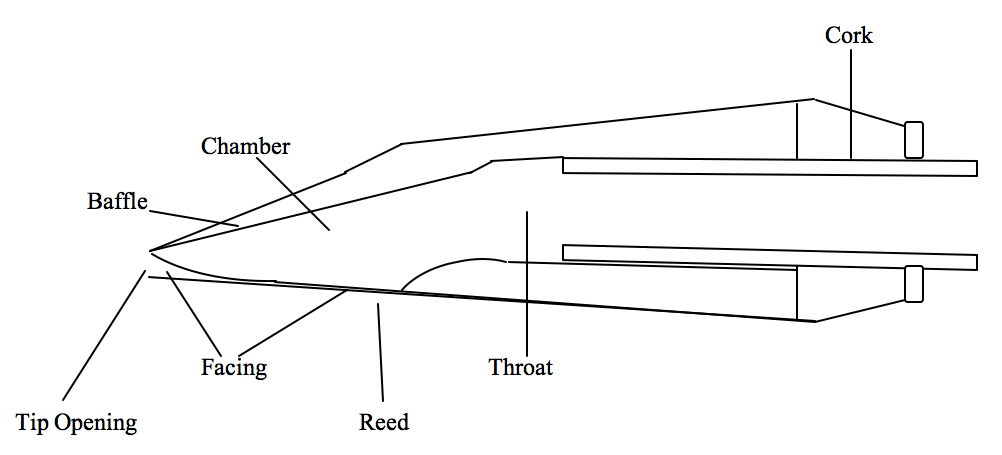When playing in the jazz style, performing with correct notes, rhythms and using authentic jazz articulations are necessary requirements for creating a great improvised solo. However, in addition to these requirements, many jazz saxophonists also use other special techniques which add a great deal of expressiveness and excitement to their performance. Some of these techniques are ghosted notes, the Cannonball Trill, and the Texas Wobble.
Ghosted Notes
Ghosting notes is a technique used in almost all genres of music including jazz and commercial styles. This technique is used to deaden specific notes in a musical phrase allowing it to swing harder and also adds much interest and character. Ghosted notes have the same rhythmic value as notes that are not ghosted but are performed with little or no sound. Ghosted notes are usually notes in a melodic line that are lower than the surrounding notes and occur on the upbeat. In musical notation, a ghosted note is usually written with an “X” in place of the normal note head or by placing the note head in parentheses.

When playing a ghosted note, the saxophonist fingers the note, giving it the appropriate rhythmic duration but does not allow the note to sound as loudly as other surrounding notes. Some performers refer to this technique as swallowing the note. The exact volume a ghosted note is varies depending upon the performer’s style and the musical situation involved. Some ghosted notes may be inaudible while others are heard only slightly.
There are several ways to produce ghosted notes on the saxophone. One method, which produces an inaudible, implied note, is accomplished by greatly reducing the airflow into the instrument while fingering the ghosted note. When using this technique, the saxophonist simply blows much less air or no air into the instrument to produce the ghosted note. This method works well when playing ghosted eighth notes at slower tempi since it allows the performer time to adjust the airflow for a specific note.
A second method of ghosting notes is to finger the note while using half tonguing articulation to mute the note. This type of ghosted note will have an audible tone since when half tonguing, the reed does not stop vibrating. This manner of ghosting notes works well at a variety of tempi especially at very fast speeds when coordination and timing are critical. Since there are several methods used to ghost notes, it is suggested that saxophonists practice each of these approaches to determine which ones work best for them in different performance situations.
 The Cannonball Trill
The Cannonball Trill
The Cannonball Trill is actually a tremolo effect made popular by the great jazz saxophonist Cannonball Adderley. Cannonball, as well as other prominent saxophonists used this tremolo in many of their solos, especially when improvising on blues tunes. This effect consists of a series of five notes played consecutively with tremolos applied to notes two, three and four. This technique is note specific and can only be performed using the notes G, B, C, C#, and D since the tremolos for each note are played with the right-hand index finger using only one alternate fingering, the high E top side key. However, the Cannonball Trill can be performed in the lower and upper register.
To perform the Cannonball Trill, the saxophonist first plays the note G as a pickup note to begin the effect. There is no tremolo applied to this note. The next three notes to be played are B, C, and C#. When playing these notes, the saxophonist should scoop into each note by slightly dropping the lower jaw and then quickly returning it to its original position while simultaneously depressing and releasing the high E top side key in a trilling fashion. The last note to be played is D, which ends the effect. The saxophonist should also scoop into this note but tremolo is not applied.
 The Texas Wobble
The Texas Wobble
The Texas Wobble is technique used by many saxophonists especially when performing the blues. This effect is actually a shake starting on the note Bb that quickly leaps down to the note G, a minor third below and then back to Bb in a tremolo effect. The factor that sets this shake apart from other shakes is the fingerings used. Instead of playing these notes with their normal fingerings, alternate fingerings are used to change their timbres creating interest, expression and character.
To produce the Texas Wobble, the saxophonist should first play a Bb and then the note G, located a minor third below, using regular fingerings to get these two pitches into the ear. Next the note Bb should be played but with an alternate fingering, the fingering for low Eb but with the left-hand ring finger not depressed. This fingering will produce the Bb but with a different timbre.
To produce the Texas Wobble between Bb and G, the saxophonist will need to blow a forceful stream of air into the instrument while using an extremely wide and quick jaw vibrato. This wide vibrato will cause the Bb note to quickly leap down to a pitch very close to G and then back to Bb. No change in fingering is needed. This technique is definitely enjoyable to play and will produce an interesting and bluesy effect in the music.
Summary
It is important as with any technique, for saxophonists to listen to recordings of master jazz artists performing these effects and imitate the sounds they hear. Through careful listening and practice, saxophonists should be able to incorporate these techniques into their playing style, enhancing jazz performance.





























